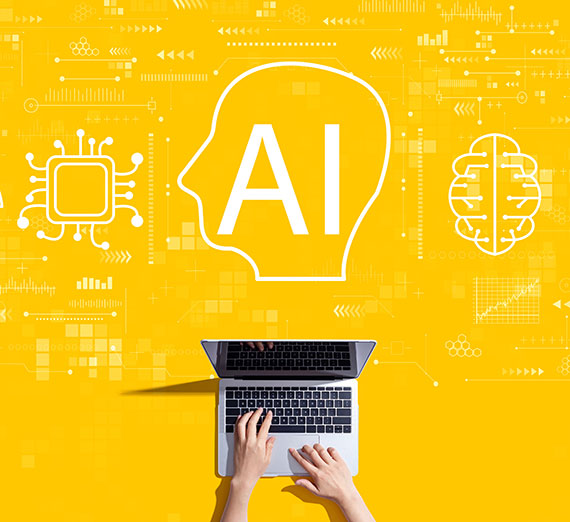Students Putting AI to Work

The adoption of artificial intelligence in a collegiate setting generates a vast spectrum of perspectives.
Despite lacking a uniform opinion on whether it should be implemented in the classroom, students across different fields have started to dip their toes into AI, and they’re finding an array of benefits and pitfalls regardless of their chosen academic discipline.
Freshman Santiago Salazar is an AI enthusiast, viewing the software as an enhancing tool rather than something to be overly reliant on. ChatGPT was the gateway software for Salazar to explore AI, testing its boundaries starting as early as his junior year of high school.
Salazar chose to study civil engineering at Gonzaga University due to its alignment with his high school’s Jesuit philosophy and his Catholic faith, values that hold great importance to him. He was drawn to the emphasis on moral principles within engineering and its potential to contribute to the common good, a core tenet of the Gonzaga mission statement exemplified by his classes.
Salazar’s interest in civil engineering was piqued from an early age since both of his parents work in the industry. Salazar regards civil engineering as a way to give back to his Latino community by building equitable infrastructure and serving as a role model in a field dominated by white males.
Diving into a career that blends his passion for engineering with his commitment to ethical principles, Santiago sees AI as a phenomenal resource to pull out of his back pocket when needed.
When tackling his civil engineering homework, Salazar will ask AI sites for specific formulas used for a problem, never asking it for the answer directly, but rather for the first step of setting up a problem.
He acknowledges that ChatGPT is a flawed software with its own set of drawbacks. It often spits out faulty equations, or false and dated information. He notes understanding its limitations and using caution is critical for a student using AI.
Salazar firmly believes AI is not a crutch unless used when cheating, which he considers a disservice to oneself. His tactics for utilizing AI have drastically grown over the years. In high school, Salizar would use it as an easy way to finish assignments rather than to learn from them. Now, as a college student, he understands it was intended to aid and develop one's critical thinking skills.
While some assignments focused on the technical aspects and ethical considerations of AI, others required its direct application in writing tasks and reflections. Salazar emphasized that the crux of the course lay in whether individuals took the time to thoroughly understand the drawbacks and benefits of AI.
Junior Kylie Mukai was skeptical of AI when she first learned about it. Mukai is an Act Six scholar pursuing a degree in English with a writing concentration and secondary teaching certification.
She was first introduced to AI by her professors in the spring of her sophomore year. They had a strong opposition to it, leading her to initially regard it as prohibited software. This translated into Mukai not experimenting and utilizing AI sites like ChatGPT until the fall of her junior year when she realized it could be harnessed as an asset. Starting with simple tasks like finding synonyms and completing sentences, she gradually integrated AI into her writing process.
Her professors’ perspectives of AI shifted in the fall of 2023, allowing her to further explore AI as writing a tool. Mukai took the Teaching of Writing course with John Eliason, who encouraged his students to use AI in teaching, writing, and as a tool for informational literacy.
Her further experimental work in the software evolved into it positively infiltrating and refining her writing process.
This acceptance of AI also permeated her education courses this semester, particularly in the class Assessment for Secondary Teachers with Suzann Girtz, in which AI was heavily integrated. The course focused on assessments, quizzes, grading, and student learning assessment. AI tools, such as prompt rubrics, were provided as resources for teachers, cutting the time spent creating rubrics in half. Mukai believes that this time-saving aspect can be redirected into building stronger relationships with students. She sees the benefit of AI in education as providing time-saving shortcuts that enhance the learning experience.
Mukai acknowledges that AI, while beneficial, has its downsides. She notes that AI often struggles with capturing the tone or mood of her writing, lacking the personal voice and perspective that a human element provides. This can result in overly formal or generic outputs that don't align with her personal writing style. Additionally, she highlights that it takes time to learn how to accurately prompt AI to produce the desired materials and to refine her skills to maintain her standard of quality.
Despite these challenges, Mukai emphasizes that her education at Gonzaga University has helped her view AI as a worthwhile tool rather than a crutch. As she looks towards her future career in teaching middle and high schoolers, she finds it intriguing to consider how AI will influence this next generation at such an impressionable age and pivotal point in their education.
